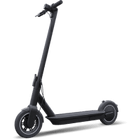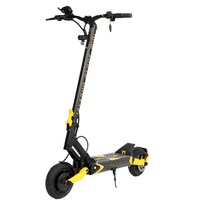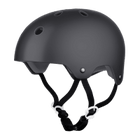Frequently asked questions
Can I ride in the rain? Waterproof scooters are becoming more common since early 2024. However even the best waterproof rating is no guarantee. We recommend to avoid heavy rain and standing water. Water on the ground can get inside motors and cause rust. Always dry your scooter off as water left sitting on it will get in eventually and can cause damage. Waterproof rating (IP rating) varies by brand. IP 4 is ok for light drizzle.
Where to buy an electric scooter? From a dealer that also has a convenient repair and service facility. Some stores sell scooters but do not supply parts so service and repair can be difficult. Check, especially if your retailer says another business will service your scooter.
What is the fastest electric scooter? Teverun Supreme 7260R (120km per hour) This is an off road vehicle only. Any scooter that will travel up to 50km easily is suitable for daily use.
How far can I go? Generally, e-scooters are designed for a minimum of one hour of continuous travel at around 25 - 30 km/h. The faster you go and the more often you accelerate or stop and start the lower your range will be. We advise a battery that will travel further than you need to allow for emergencies, and because performance will decline over time
How long do they take to charge? Bigger batteries take longer. Most will charge from 20% - 80% in 3 - 4 hours. 80 - 100% will take longer.
Do I need a licence to use an e-scooter on the road? Currently no.
How can I avoid punctures? Honeycomb solid tyres are excellent and available for many smaller scooters but take care in the wet. Tyre liners, tyre sealant and tyre pressure are important and we recommend checking tyre pressure every 4 weeks or so. Watch out where you ride and avoid gutters.
Who fixes electric scooters? E-scooter repairs are essential. Freedpev service a wide range of electric scooters in the Auckland CBD. Some stores only fix what they sell. Some brands that we can not get parts for we do not service.
For Free advice call 021498269. Tuesday to Saturday from 10am. Or email info@freedpev.com


